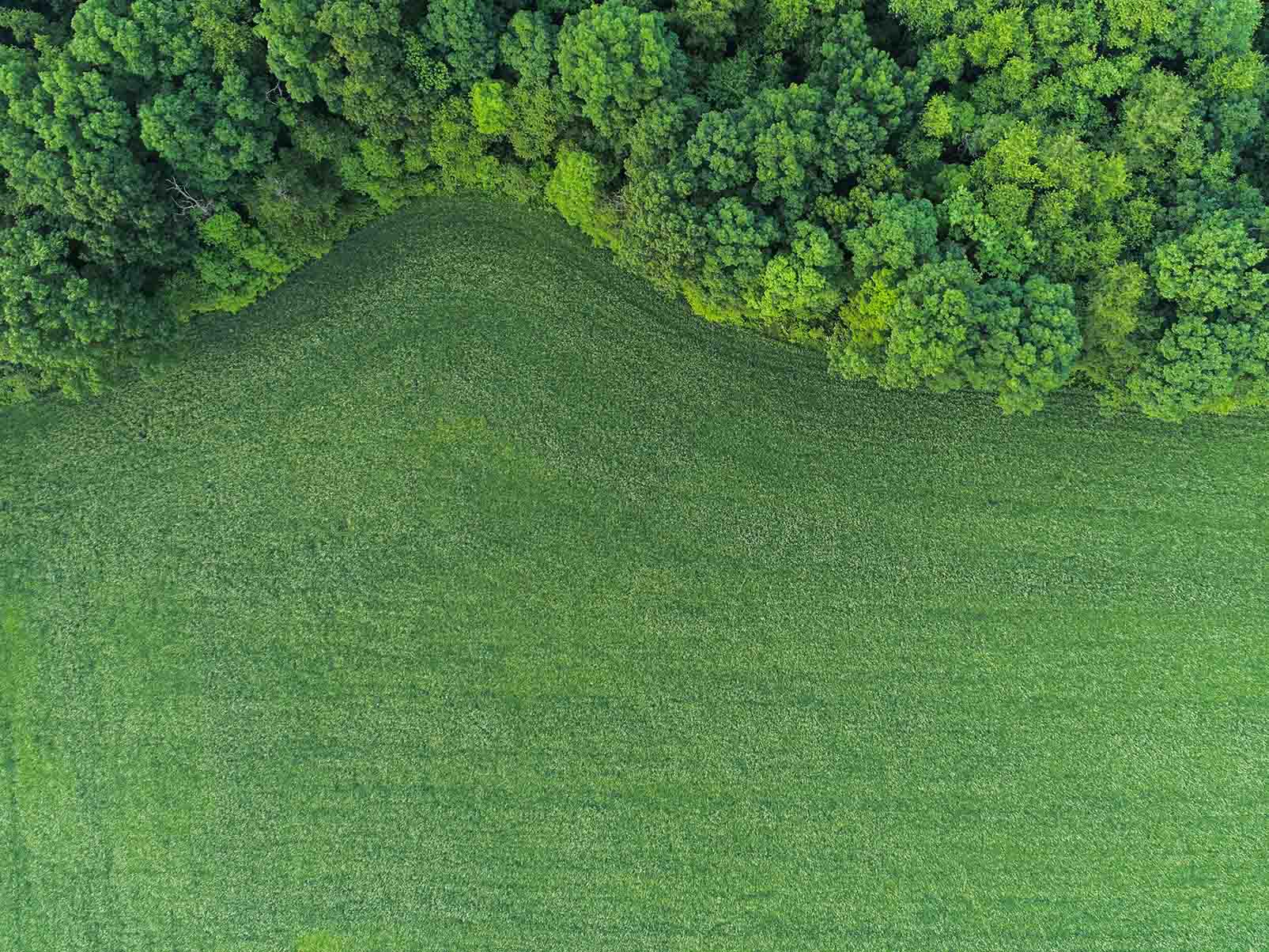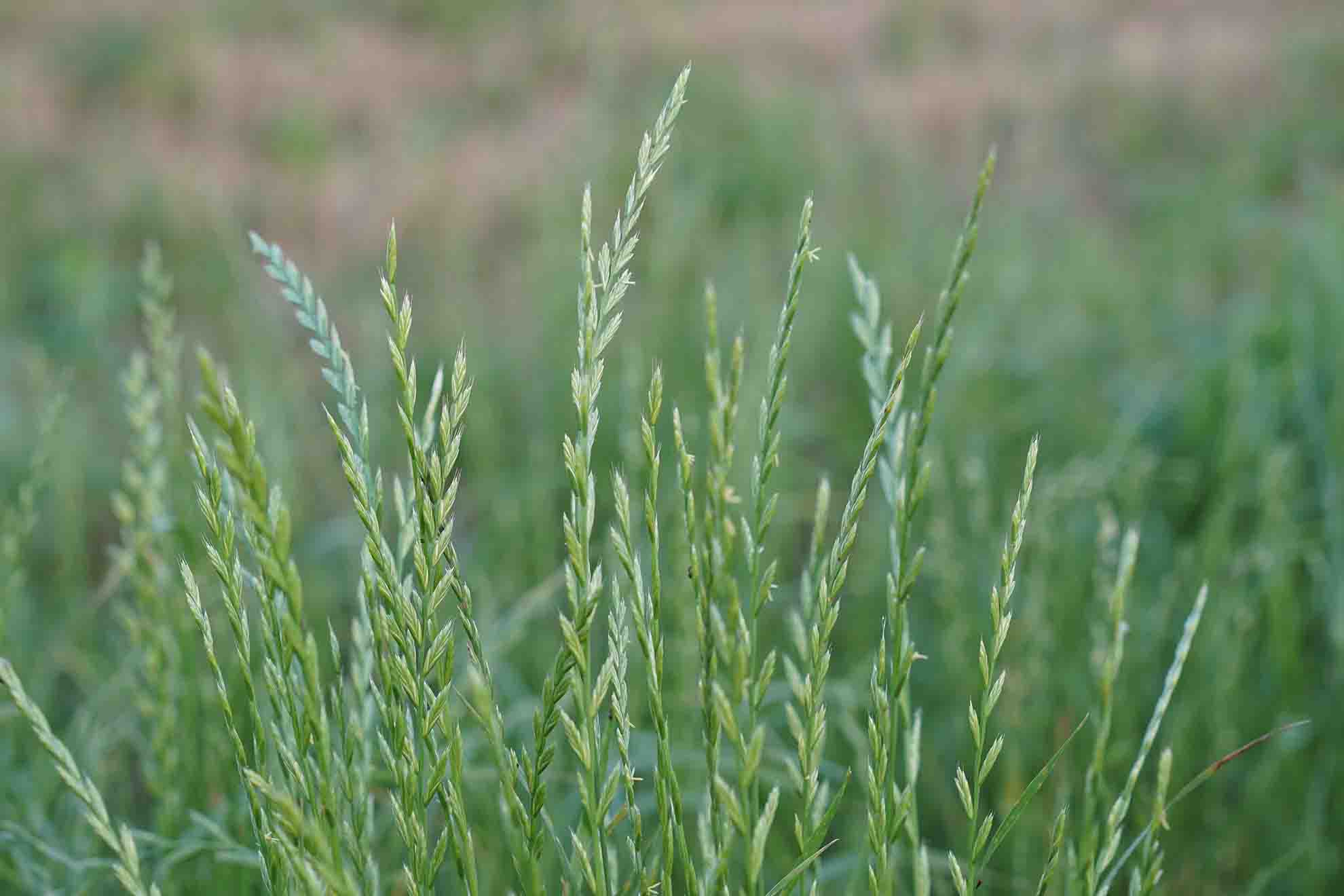Last Updated:
November 5, 2025
Perennial ryegrass is a cool-season turf variety widely appreciated throughout temperate regions of the United States, and it’s especially valued in Utah’s unique climate. This grass is known for its quick germination and ability to create a full uniform appearance. Because perennial ryegrass thrives during cooler parts of the year, homeowners in Utah often choose it for overseeding, lawn repairs, or as a primary turfgrass in areas that experience seasonal temperature swings.
Keep reading to learn all about the best lawn care strategies for perennial ryegrass in your Utah lawn!

Perennial ryegrass has a fine-to-medium leaf texture with smooth, glossy blades that grow upright, giving lawns a polished appearance. The color is typically a bright, vibrant green when properly fertilized and watered, creating an eye-catching appeal in residential settings. Compared to Kentucky bluegrass or tall fescue, perennial ryegrass blades tend to be more narrow and pointed at the tips.
One of the defining characteristics of perennial ryegrass is its rapid germination rate. It’s often one of the first grasses to sprout after seeding, sometimes within a week, making it an ideal solution for repairing bare patches. Rather than spreading with stolons or rhizomes, perennial ryegrass grows in clumps, which helps shape a dense turf but may also result in open areas over time if neglected.
When mowed regularly, perennial ryegrass feels soft underfoot and is comfortable for kids, pets, and recreation. However, due to the clump-forming growth habit, lawns can develop uneven areas if not maintained consistently.
Key Characteristics:

Perennial ryegrass offers several appealing qualities that make it a solid choice for Utah homeowners. Its incredibly fast germination makes it one of the best grasses for overseeding, patch repair, and establishing new lawns quickly. Because it develops so rapidly, it suppresses many weed species by shading the soil before they have a chance to emerge.
This grass handles cool temperatures with ease, retaining color in fall and greening up early in spring. It’s excellent for Utah’s shoulder seasons, when many warm-season grasses struggle. Perennial ryegrass also tolerates traffic well, making it suitable for active backyards, sports areas, and high-use landscapes.
While it can survive short dry periods, consistent irrigation is preferred during Utah’s hot, dry summers, as drought stress can cause browning. With proper watering, perennial ryegrass can maintain color longer than many cool-season alternatives.
Main Benefits:

Perennial ryegrass follows a cool-season growth cycle and performs best when temperatures remain moderate. Its growth habits shift throughout the year, so adjusting care by season is essential.
As temperatures climb into the 50s and 60s, perennial ryegrass begins accelerating growth. New shoots emerge rapidly, color intensifies, and root activity expands. This is an ideal time for fertilization and mowing frequency increases to maintain a neat surface. Any winter damage or thinning fills back in quickly with proper care.
Utah summers can be tough on cool-season grasses. When temperatures exceed 85°F, perennial ryegrass may slow growth, lose density, or discolor. Irrigation becomes crucial to prevent stress. While growth persists, it’s less vigorous, and traffic recovery can take longer. Some homeowners overseed warm-season alternatives to support appearance during peak heat.
Cool air returns and perennial ryegrass rebounds strongly. Growth density improves, color deepens, and roots store up carbohydrates for winter. Many Utah homeowners overseed during this period to refresh thinning turf and prepare for the coming cold.
When temperatures drop, growth stops and the grass becomes semi-dormant. Color may fade to tan or straw tones depending on severity. However, root systems and crowns remain alive underground, waiting to reactivate once warmer weather arrives.

Although perennial ryegrass offers numerous benefits, there are some limitations to consider. Because it does not produce runners, it cannot aggressively fill bare spots on its own, so overseeding is often required to maintain density. In Utah’s arid climate, supplemental irrigation is typically necessary during long stretches of heat.
This grass can also be prone to fungal issues in humid or heavily irrigated conditions, especially during midsummer. Another drawback is its sensitivity to extreme cold snaps—severe winter weather can damage crowns and lead to patchiness in spring. Additionally, perennial ryegrass often requires more frequent mowing due to its upright growth habit.
Potential Drawbacks:

With proper care, perennial ryegrass can deliver a beautiful, consistently green lawn throughout Utah’s cooler seasons. Attention to mowing, irrigation, and nutrient balance will help preserve its color and density year-round.
If you’re a Utah homeowner looking to refresh, improve, or establish a perennial ryegrass lawn, professional help can make all the difference. Contact Holmes to schedule lawn fertilization and seasonal maintenance services that keep your turf performing at its best all year long!
How To Care For Kentucky Bluegrass In Utah Lawns
Kentucky bluegrass is beloved as one of the most beautiful and comfortable turf types available. Come learn how to maintain this grass in your Utah lawn.
Learn MoreHow To Care For Perennial Ryegrass In Utah Lawns
This post explores why perennial ryegrass is perfect for Utah homeowners who want a resilient lawn that looks great!
Learn MoreHow To Care For Tall Fescue In Utah Lawns
This blog post explores what makes tall fescue one of the most popular grass types in Utah, and what steps you can take to maintain a tall fescue lawn.
Learn More